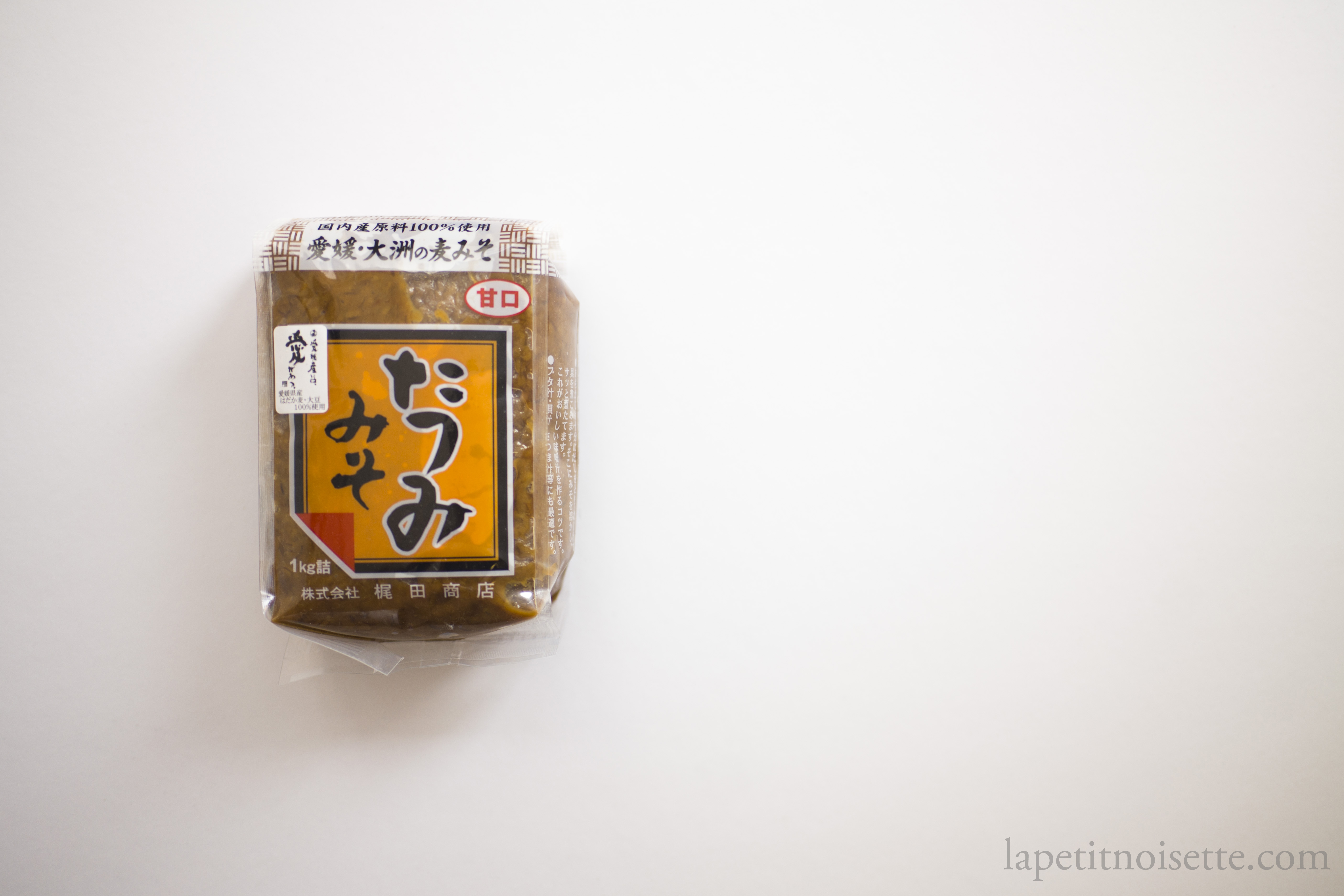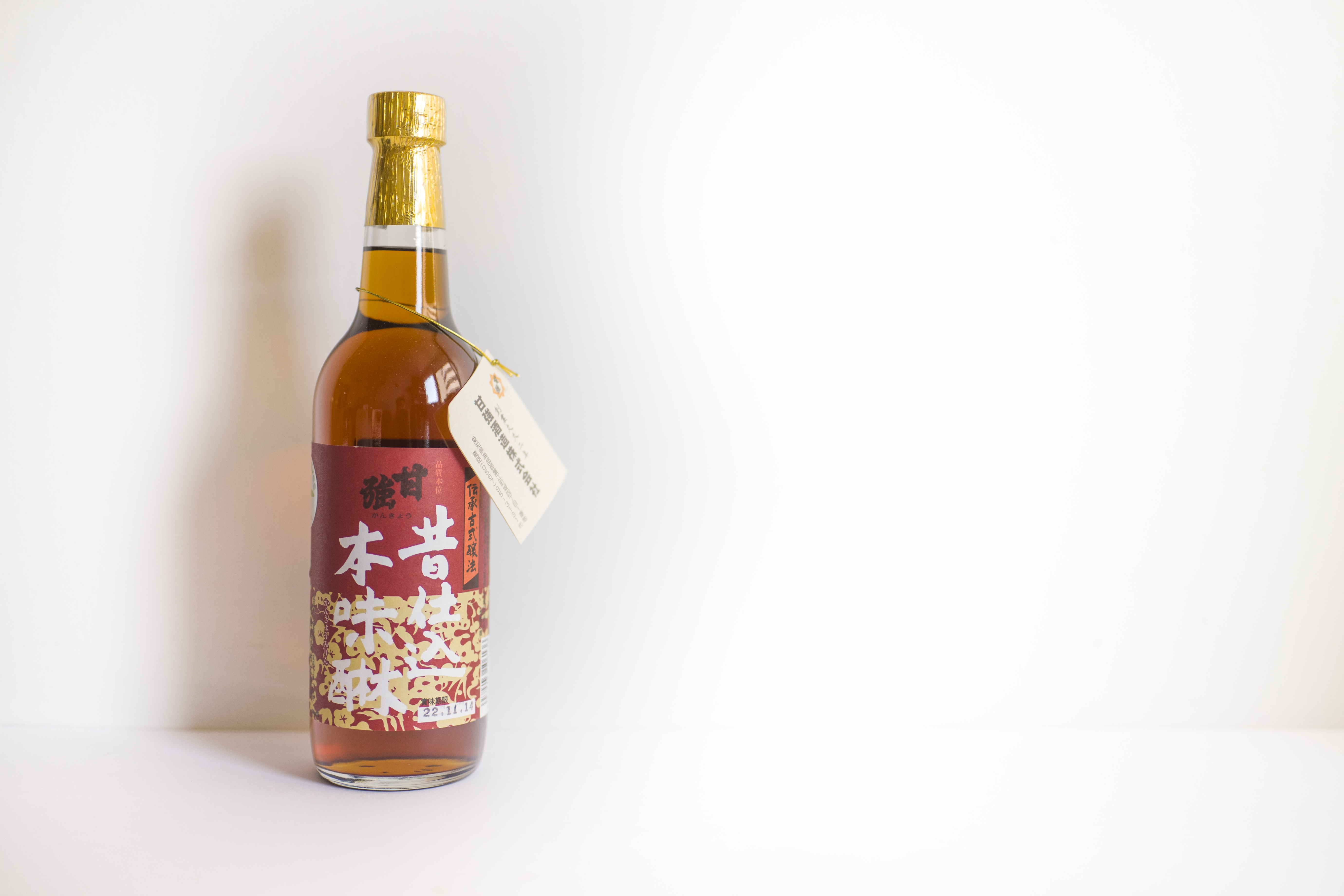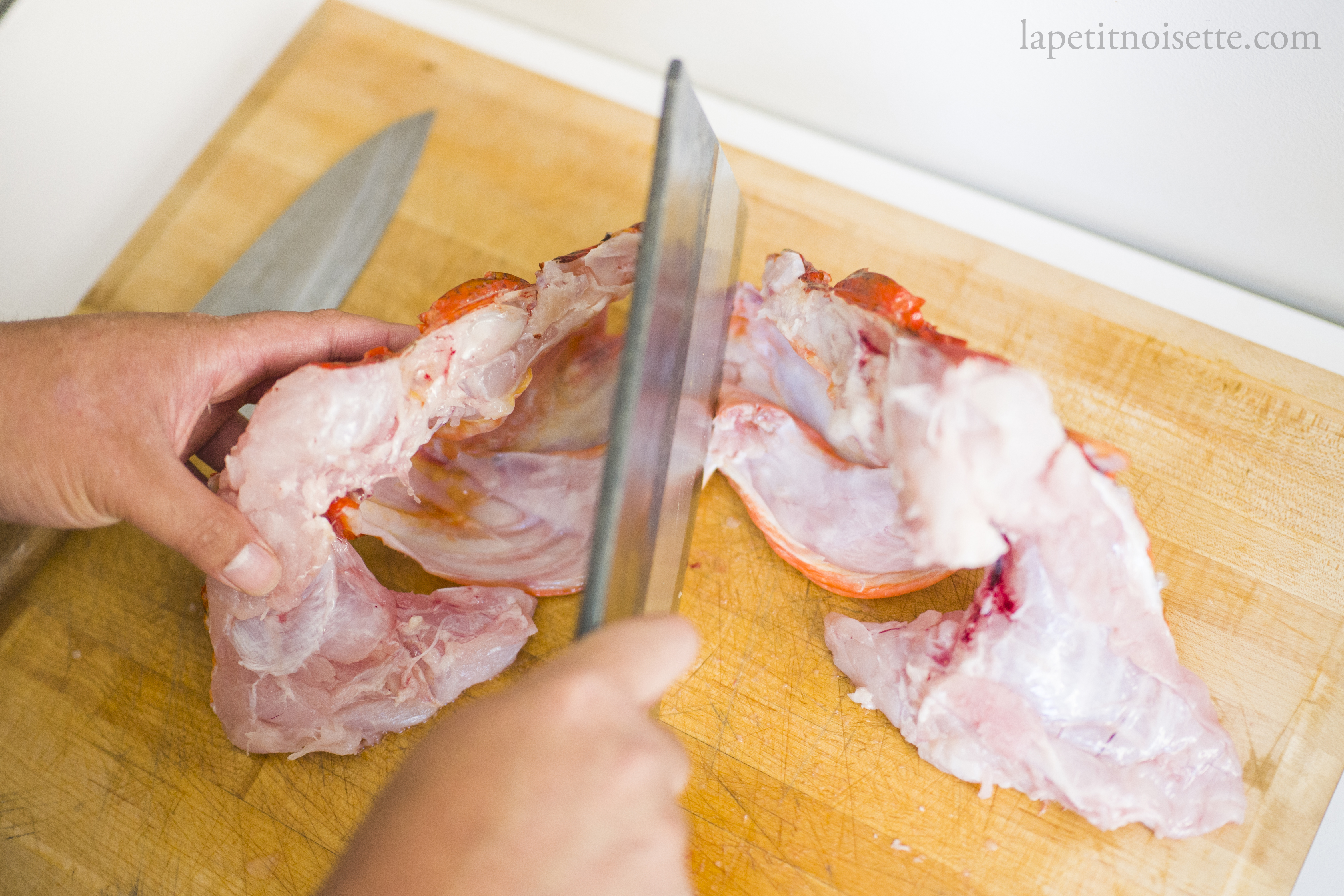
Ask any fish lover and they’ll tell you that the head of the fish yields many treasures. It’s a part of the fish that savvy grandmothers, fishmongers or kitchen staff usually have the pleasure of eating. The high amount of gelatin in a fish head also makes for a luscious soup. In the restaurant that I worked at, occasionally large fish heads would arrive at the kitchen.
Because of their large size, there would be enough meat in it for our 10 counter customers and thus it warranted being served. We would either grill the head over charcoal or serve it in soup. The recipe here is an example of one of the ways we would prepare fish head in miso soup.
Suitable fish used for making this dish are any heads from large non-oily fishes. Ideal candidates are Tai, Kinmedai and Kasago/Onikasago. Shima Aji, buri or saba are not as ideal as they tend to be too fishy. Probably the most memorable fish that we’d used in the restaurant before to make this dish was a massive 10kg Osaga (オオサガ/メヌケ) that came in one day. For this miso soup, it’s also occasionally possible to use the entire fish if the fish is small enough. This is typically done with Kasago and Onikasago.

To prepare the fish head, you’d want to clean out any grit or blood thoroughly using an old toothbrush. From experience, no matter how thoroughly you try and remove all the scales from a fish head, they’d still be some hidden ones in hard to reach places. Therefore, I highly recommend blanching the head first before using your fingers to manually feel for the scales, which should now be easy to remove. Be careful not to cut your fingers on the head. To add toasty notes, feel free to grill the head over charcoal before adding to the soup. If the head is too big, you can split it in half using the kabuto-wari technique elaborated to break it down into even smaller pieces.
The sweetness from the mirin here helps to round out the miso soup, especially if you’re using hon-mirin. However, hon-mirin has about 15% alcohol and thus you’d want to evaporate out the alcohol before closing the lid of the pot, else the alcohol sometimes re-dissolves back into the soup, giving it a slightly alcoholic taste.

For this recipe, I opted for 2 types of barley miso instead of miso made from rice koji. This is because the taste of barley miso tends to have less sugar and thus less sweetness than miso from rice koji. This combined with the taste of barley gives it a much more warm and rustic taste in my opinion. It doesn’t have the same purity of polish rice. I like the mix of a young mellow barley miso and an older aged barley miso, but feel free to replace the older barley miso with red miso if it’s hard to find. Barley miso is usually also much chunkier compared to miso made from rice koji as barley does not break down into a smooth paste when crushed, so it’s important to dissolve your barley into the soup through a strainer.

Fish head barley miso soup
500g fish head (half a fish head of the same weight was used in the pictures above)
45ml hon-mirin
650ml of dashi
30g mellow barley miso
60g barley miso
10g of finely chopped spring onions
Bring a pot of water up to a boil and blanch the fish head for around 20 seconds. Immediately place the fish head under running water and use your fingers to rub off any remaining scales from the head, focusing on collars and areas underneath the fins. If some grit and blood remain inside the head, use an old toothbrush to scrub it out. Combine the dashi and hon-mirin in a pot and bring it up to a boil to evaporate any alcohol. Once boiling, turn it down to a simmer and add both types of miso into a strainer. Place the strainer into the pot and use a spoon to dissolve the miso into the dashi. Discard any remaining solids. Add the fish head into the pot, close the lid and simmer for 5 minutes. If the head is not fully submerged, flip after 2 minutes 30 seconds. Turn off the heat and add in the spring onions.

To serve, the fish head should now be fully cooked and easy to be pulled apart into chunks before placed into individual serving bowls. In a restaurant setting where the fish is cooked in a claypot as pictured above, the fully cooked head will be presented to the guest, before the head is taken back to the kitchen. The meat will then be extracted from the head and split into even proportions with the soup.